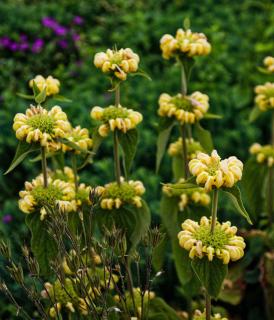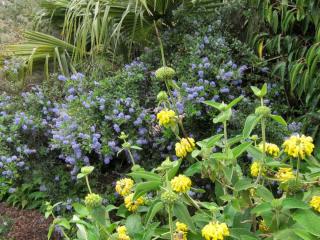

Phlomis fruticosa, known as Jerusalem sage, is a low-maintenance, decorative, and hardy shrub.
Key Jerusalem Sage facts:
Name: Phlomis fruticosa
Family: Lamiaceae
Type: perennial
Height: about 5 feet (150 cm)
Exposure: sunny to partially shaded
Soil: ordinary, even poor
Foliage: evergreen – Bloom: May to July
You can plant Jerusalem sage, or Phlomis fruticosa, in either spring or fall, ideally in well-drained soil.Indeed, when planting Jerusalem sage, ensure your soil drains well because this plant hates standing water.
 Phlomis fruticosa loves sunny spots for a healthy bloom.
Phlomis fruticosa loves sunny spots for a healthy bloom.When it comes to upkeep, this plant is super easy to grow and barely needs any care. No need for watering once it’s established because it can survive without water for many long weeks.
After blooming, cut it down by about half to maintain a compact shape and enhance next year’s blooms.
Jerusalem sage, or Phlomis fruticosa, is a hardy plant, resistant to most diseases.
You may spot leafhoppers at the base of leaves, but it shouldn’t hinder growth or flowering of the Jerusalem sage.

The Jerusalem sage sprouts beautiful yellow flowers in the spring, creating a stunningly beautiful flowering bush.
Sharing the same family tree as thyme, basil, rosemary, and medicinal sage, Jerusalem sage traces its roots back to the Mediterranean.
It’s this plant’s hardiness and adaptability to dry and challenging areas, like beachfronts, that make us love Phlomis fruticosa. It’s worth noting, though, that while the Jerusalem sage is evergreen, it might shed its leaves in winter if it gets cold.
If you live by the sea or if you just can’t get enough of that Mediterranean vibe, Phlomis fruticosa is perfect for you!